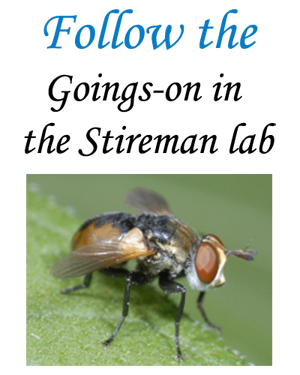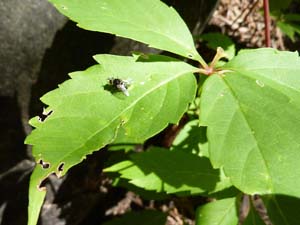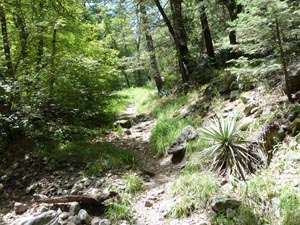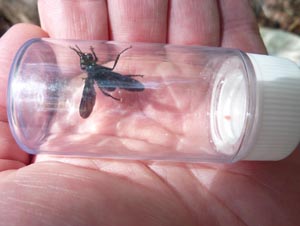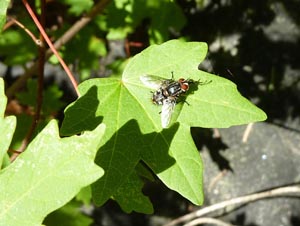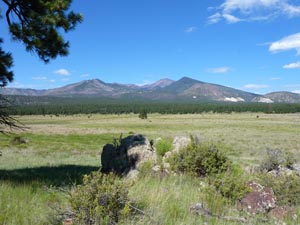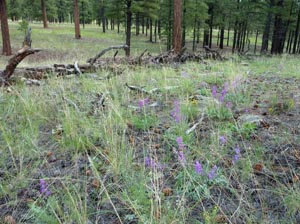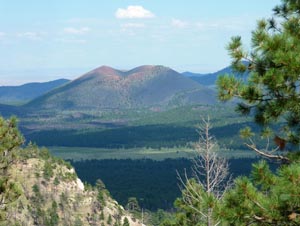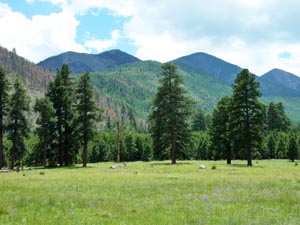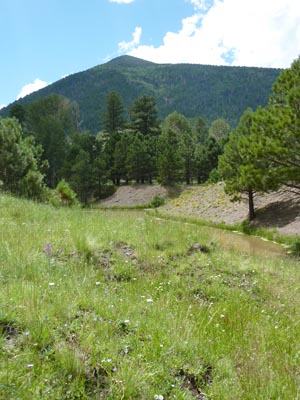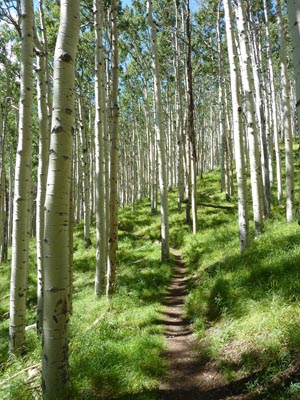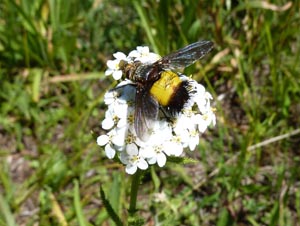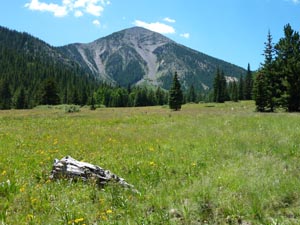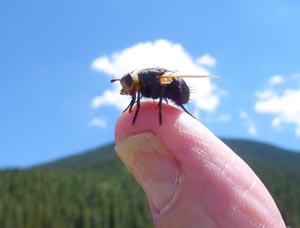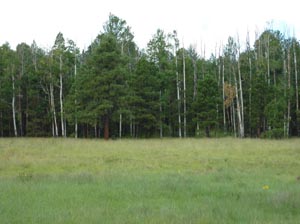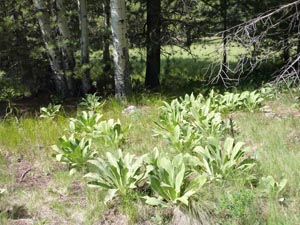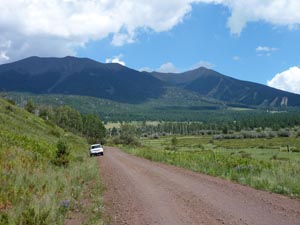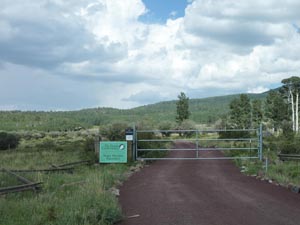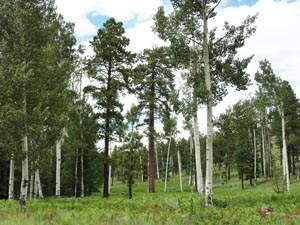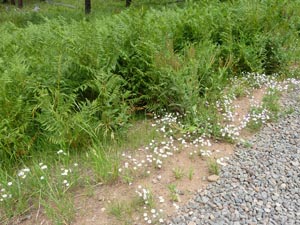
by James O'Hara
In August of this year I made a short trip to Arizona, flying into and out of Phoenix. The primary aim was to search for tachinids that have been targeted for molecular study as part of the Phylogeny of World Tachinidae Project. The secondary aim was to collect and pin tachinid flies of value to my research program and the holdings of the Canadian National Collection of Insects (CNC) in Ottawa, Canada.
Top on the list of species I was after were Penthosia satanica (Bigot) and Freraea montana (Coquillett). There were other species that could potentially be found that would be equally important to our study, but P. satanica and F. montana were two that I had collected before and thus I knew where to look for them. Penthosia satanica is not uncommon in Mexico but I am not aware of it north of the border except in the Huachuca Mountains in southeastern Arizona. I collected perhaps four specimens of P. satanica during about 10 short visits to the Huachucas during the past 30 years. Freraea montana is a widespread species in North America but I have only collected it a couple of times, on both occasions in a grassy area under ponderosa pines west of Sunset Crater in northern Arizona in the early 1980s. On this trip in August 2013 I went to the places where I had collected P. satanica and F. montana in the past, but caught only the former.
I do not have a complete list of the species collected during this trip but I can:
- record here the localities where tachinids were collected,
- list the species collected for DNA,
- name some of the notable other species, and
- attach a few images of the localities and tachinids.
Specimens destined for possible molecular analyses were treated in the manner I described a couple of years ago in "Collecting and preserving tachinid legs for molecular study" (The Tachinid Times 24: 11-14, 2011). In brief, this involved collecting live flies into vials and later killing them and placing the right legs in 95% ethanol.
Localities and species arranged by collecting event
USA, Arizona, Huachuca Mountains, Ramsey Canyon, Hamburg Trail, 31°26.2'N 110°19.2'W, ca. 6200', 9-10.viii.2013.
Ramsey Canyon in the Huachuca Mountains has one of the most diverse tachinid faunas of any place in the United States. Ramsey Canyon Preserve occupies the lower portion of the canyon (and permission is needed to collect there), but the upper portion beyond the Preserve (along the Hamburg Trail within the Coronado National Forest) appears to have higher tachinid diversity. Tachinid collecting within Ramsey Canyon is never the same from year to year and many rarely-collected species, new species, and new records for America north of Mexico have come from here.
Specimens preserved for molecular analyses:
Carcelia sp. (?undescribed), 1 female
Chrysotachina alcedo (Loew), 1 male
Chrysotachina auriceps O'Hara, 1 female
Cylindromyia (Ichneumonops) mirabilis (Townsend), 1 male
Euchaetogyne roederi (Williston), 1 male
Houghia sp. nov., 1 male. This species will be described soon by Fleming & Wood as part of a revision of the Houghia species of Area de Conservación Guanacaste, Costa Rica. This record from Ramsey Canyon is the only record for this species from outside Costa Rica.
Myiopharus moestus (van der Wulp), 2 males & 1 female. This species was first recorded from America north of Mexico by O'Hara & Wood (2004) based on a series of males I collected along the Hamburg Trail in 1999. The species was very abundant on this past trip, with males being especially conspicuous. Several females were collected and represent the first females of this species in the CNC.
Penthosia satanica (Bigot), 1 maleStomatodexia sp. nov., 1 male. We have several specimens of this species in the CNC from Ida and Ramsey canyons in the Huachuca Mountains. These earlier specimens were originally misidentified as Leskia sp. This genus will be reported as newly recorded from America north of Mexico in the next The Tachinid Times (issue 27, 2014).
Uramya halisidotae (Townsend), 1 maleSome other tachinids:
Archytas sp.
Chrysoexorista sp.
Gaediopsis sp.
Gymnoclytia sp.
Leschenaultia spp.
Peleteria sp.
Phebellia helvina (Coquillett)
Ptilodexia spp.
Winthemia rufonotata (Bigot) of authors. This "species" might be a species complex.
USA, Arizona, Coconino National Forest, Bonito Park near Sunset Crater, 35°22.2'N 111°34.0'W, 7120', 12.viii.2013 & 15.viii.2013.
Specimens preserved for molecular analyses:
Dinera grisescens (Fallén), 1 male
Other tachinids:
Campylocheta sp.
Ceracia dentata (Coquillett)
Chaetogaedia sp.
Chetogena parvipalpis (van der Wulp)
Distichona sp. Similar to, but possibly different from, D. kansensis (Townsend).
Leucostoma sp.
Madremyia saundersii (Williston)
Paradidyma sp.
Periscepsia sp.
Phasia sp.
Ptilodexia sp.
USA, Arizona, Coconino National Forest, San Francisco Peaks, Lockette Meadow, 35°21.5'N 111°37.2'W, 8560', 12.viii.2013.
Specimens preserved for molecular analyses:
Peleteria (Oxydosphyria) iterans (Walker), 1 male
Tachina (Rhachogaster) algens Wiedemann, 1 male
Xanthoepalpus bicolor (Williston), 1 female
Some other tachinids:
Chaetogaedia sp.
Gnadochaeta sp.
Microphthalma obsoleta (van der Wulp)
Phasia sp.
Ptilodexia spp.
USA, Arizona, Coconino National Forest, San Francisco Peaks, Inner Basin & trail from Lockette Meadow, 35°20.4'N 111°39.1'W, 9800', 13.viii.2013.
Specimens preserved for molecular analyses:
Leucostoma gravipes van der Wulp, 1 male
Madremyia saundersii (Williston), 1 male
Protodejeania ?hystricosa (Williston), 1 male & 1 female. Separation from P. echinata (Thomson) is difficult.
Tachina (Rhachogaster) algens Wiedemann, 1 female
Some other tachinids:
Adejeania vexatrix (Osten Sacken)
Archytas sp.
Chrysoexorista sp.
Gymnosoma sp.
Leschenaultia sp.
Meigenia submissa (Aldrich & Webber)
Peleteria (Oxydosphyria) iterans (Walker)
Peleteria sp.
Periscepsia (Ramonda) polita (Brooks)
Phasia spp.
Ptilodexia spp.
Xanthoepalpus bicolor (Williston)
USA, Arizona, Coconino National Forest, San Francisco Peaks, junction of roads 151 & 418, 35°22.4'N 111°44.0'W, 8300', 14.viii.2013.
No specimens preserved for molecular analyses.
Other tachinids:
Leucostoma gravipes van der Wulp
Phytomyptera sp.
USA, Arizona, Coconino National Forest, San Francisco Peaks, Bismarck Lake Road, 35°21.7'N 111°44.4'W, 8550', 14.viii.2013.
Specimen preserved for molecular analyses:
Periscepsia (Ramonda) polita (Brooks), 1 female
Some other tachinids:
Athrycia cinerea (Coquillett)
Ginglymia johnsoni (Coquillett)
USA, Arizona, Coconino National Forest, San Francisco Peaks, near Hart Prairie, 35°20.7'N 111°44.4'W, 8375', 14.viii.2013.
Nestled up against the western flank of the San Francisco Peaks is Hart Prairie, a botanically interesting area that is home to almost 300 species of vascular plants. The richest portion of the prairie is protected as the Hart Prairie Preserve, which is managed by the Nature Conservancy. I collected in an area adjacent to the preserve, but although rich in wildflowers I did not see many tachinids.
Hart Prairie is noteworthy for another reason besides its rich flora. On the morning of 15 July 1892, Charles H.T. Townsend set off from Hart Little Spring (which I cannot locate precisely but ispresumably in Hart Prairie) as part of a small party of biologists to climb to the summit of "San Francisco Mountain" (probably Humphreys Peak, since an elevation of 12,794' is noted) (Townsend 1893). Each member of the party found his own way to the top, with Townsend arriving about noon. This was a climb of over 4000' without a trail. His way down was by a less direct route because "while wildly chasing bugs, I got off the ridge I had intended to follow, and branched off on a more southerly one" (p. 152). Townsend reached camp and "now mounted, pinned in boxes, and put away seventy specimens of insects that I had collected during the day" (p. 153). A month later, travelling by horse-drawn wagon, Townsend and his companions arrived back in Las Cruces in southwestern New Mexico, from where they had started over two months earlier.
Specimens preserved for molecular analyses:
Ginglymia johnsoni (Coquillett)
Hypovoria cauta (Townsend), 1 female. This is the CNC's only specimen of this species from Arizona.
Lydina americana (Townsend) sp. complex
Other tachinids:
Aplomya theclarum (Scudder) species complex
Chaetogaedia sp.
Ceracia dentata (Coquillett)
Phasia sp.
Microphthalma obsoleta (van der Wulp)
Peleteria sp.
Tachina sp(p). Not T. algens Wiedemann.
Xanthomelanodes sp.
USA, Arizona, Coconino National Forest, San Francisco Peaks, Road 418, 35°23.1'N 111°42.9'W, 8300', 15.viii.2013.
No specimens preserved for molecular analyses.
Other tachinids:
Cylindromyia sp.
Peleteria sp(p).
Phasia sp(p).
Ptilodexia sp.
Siphosturmia confusa Reinhard
All specimens collected during this short trip are shown here. They are all housed in the CNC. Non-tachinids were dispersed to other dipterists and to entomologists responsible for other orders.
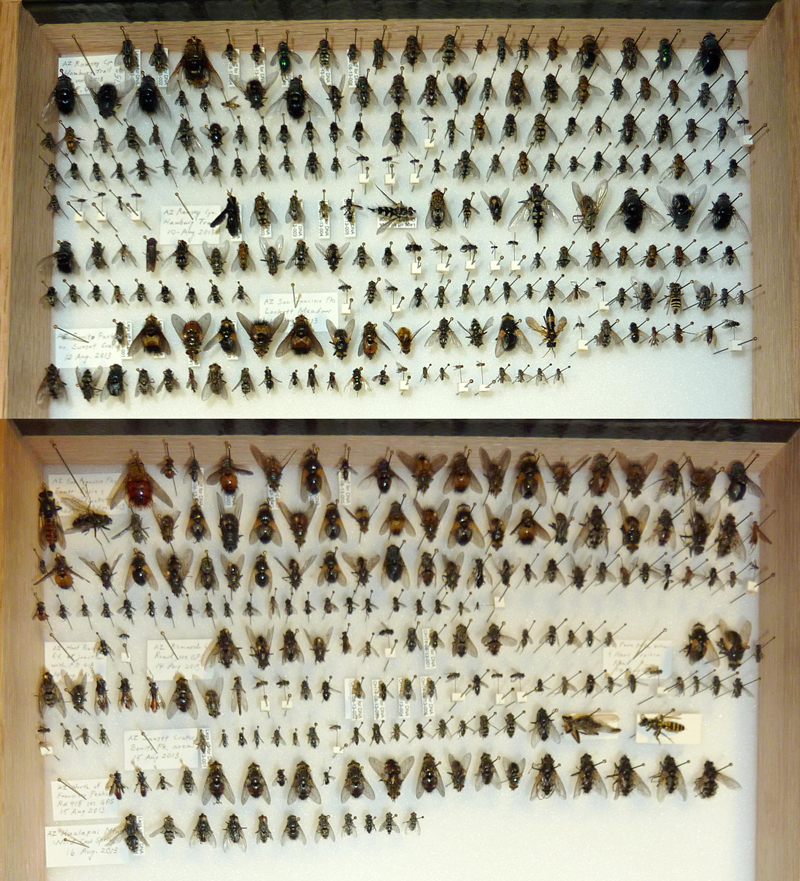
References
O'Hara, J.E. and D.M. Wood. 2004. Catalogue of the Tachinidae (Diptera) of America north of Mexico. Memoirs on Entomology, International 18: 410 pp.
Townsend, C.H.T. 1893. An ascent of San Francisco Mountain (Arizona) and the homeward route. Appalachia 7: 149–157.

